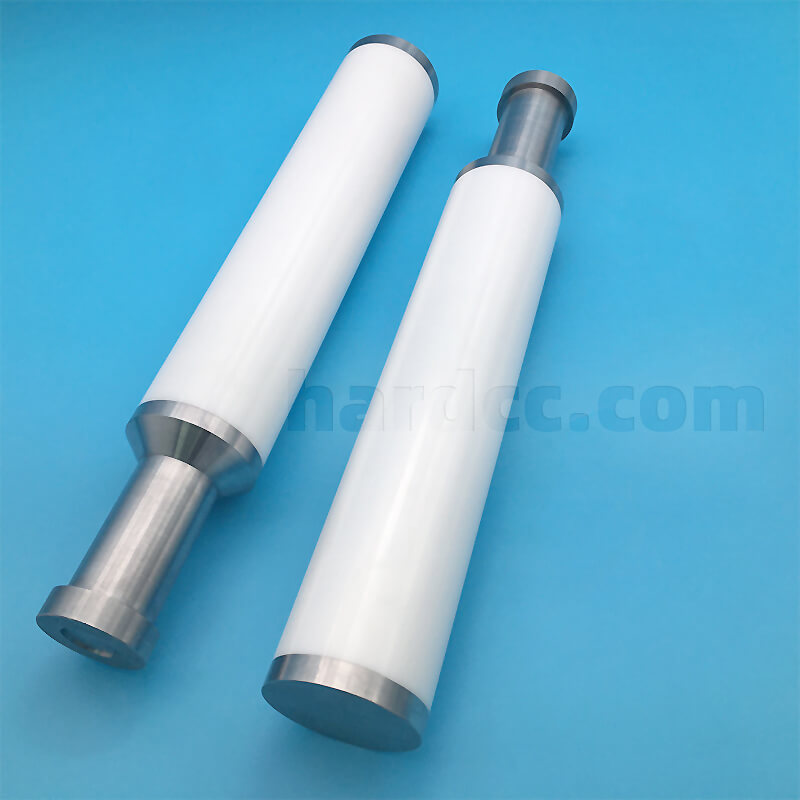Key Issues in Zirconia Ceramic Plunger Pump Applications
The zirconia ceramic plunger pump’s metering components are made of wear-resistant, corrosion-resistant, and high-temperature-resistant precision ceramics, ensuring accurate measurement and long service life. Ideal for filling and metering water injections, freeze-dried powder injections, and other liquid formulations.
E-mail:sales01@hkceramic.com
A. The ceramic plunger pump consists of ceramic metering components (including ceramic plunger pump sleeves, plungers, and groove valve metering rods), stainless steel liquid inlet and outlet nozzles, and connecting parts.
B. The working principle of the zirconia ceramic plunger pump:
- The downward linear movement of the ceramic plunger creates a negative pressure, drawing in the liquid.
- The upward linear movement of the ceramic plunger creates a positive pressure, expelling the liquid.
- Extremely inert metal oxides, resistant to acid and alkali corrosion, high temperature, suitable for repeated sterilization under high temperature conditions.
- Ultra-high material hardness: wear-resistant, extremely long service life (5-8 times that of chrome-plated steel pumps), minimal particle release.
- Crystal structure exhibits zero porosity, material density: extremely smooth surface, minimal friction, minimal drug residue.
- Minimal thermal expansion: smaller plunger clearance allows for continuous operation without liquid, higher filling accuracy, and capability for online washing and sterilization.
Volume range, operating temperature, and filling accuracy of ceramic plunger pumps:
- Filling metering range and accuracy: Standard product maximum stroke ranges from 6mm to 45mm, with metering accuracy from 0.1% to 0.5%.
- Operating temperature of ceramic plunger pumps: The designed operating temperature for common products is 10-45°C. If your operating temperature is outside this range, please contact our company, and we will provide a solution based on your parameters.
- Products undergo leak testing before leaving the factory and undergo filling accuracy testing on filling machines. Accuracy testing is conducted using injection-grade water as the medium, employing weighing methods, strategizing averages, upper and lower limits.
- Viscosity range for filling liquids using ceramic plunger pumps: Traditional products are suitable for fluids with viscosities up to 20,000 cps, without solid particles.
Ceramic plunger pump washing and sterilization:
- Washing procedure: Rinse thoroughly with purified water, then rinse with injection-grade water. For initial use or long-term storage, soak in 1-3% NaOH solution (excluding hot parts) for 5-15 minutes, then rinse thoroughly with injection-grade water.
- Sterilization procedure: Recommend using high-pressure steam for sterilization, at 121°C, 0.1 MPa pressure, for 30 minutes (process validation required).
- Details of washing and sterilization:
-
- Do not use fluorine-containing chemical solutions to avoid corrosion of stainless steel parts.
- Avoid pulling ceramic plunger and ceramic sleeve parts in water exceeding 40°C during washing; remove ceramic plungers for washing.
- Do not interchange ceramic rods and plungers during the washing process.
- During sterilization, place rotary valves, ceramic plungers, and metering rods in a dedicated washing and sterilization box; vertically hang ceramic rods and plungers for steam sterilization. After sterilization, allow the pump body temperature to drop to room temperature before handling to prevent cracking and deformation due to rapid cooling.
- If there are yellow stains on ceramic pump bodies in contact with medicinal fluids, soak in 10% citric acid for 0.5-1 hour, then rinse with injection-grade water.
- Due to ceramic hardness greater than stainless steel, contact between ceramic and stainless steel may cause ceramic surface adhesion or damage, affecting pump operation. Use non-metallic materials (e.g., PTFE) for storage containers during washing and sterilization.
- When removing plunger sleeves, plungers, and groove valves from machinery, store plungers vertically and secure groove valves vertically with ropes to prevent deformation due to gravity.

